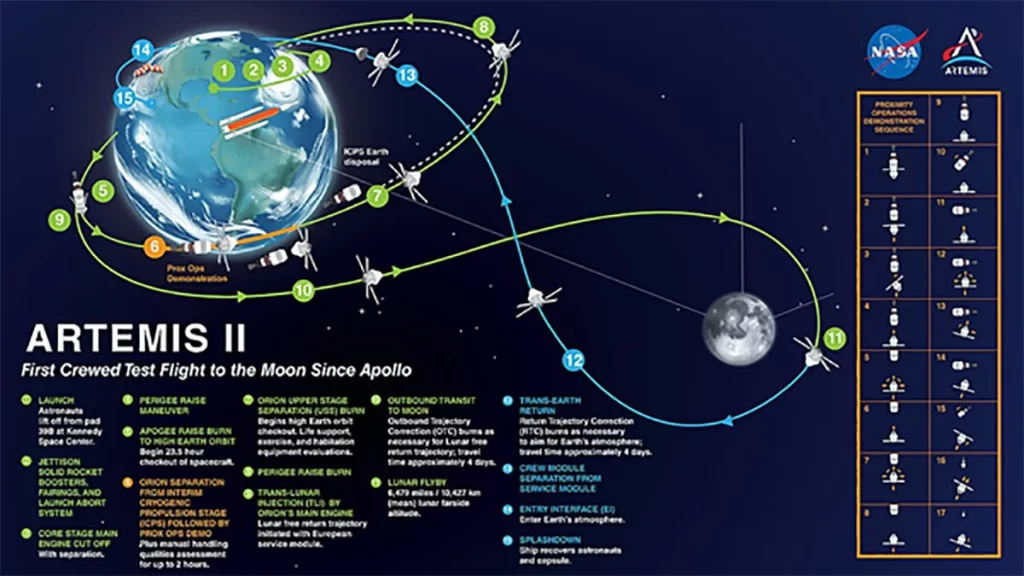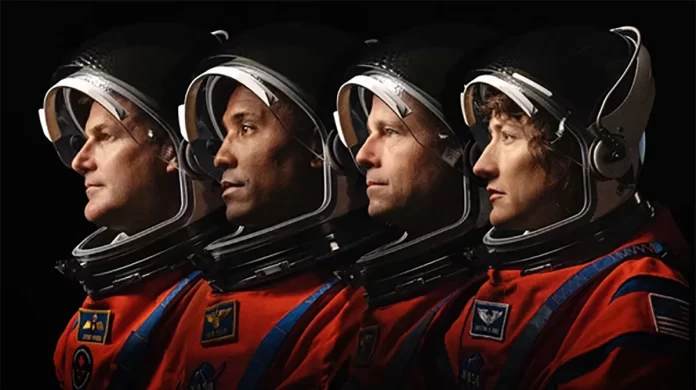Artemis 2 mission – Latest Information on Space Science
NASA’s Artemis 2 mission! This mission, which is scheduled for flight in late 2024, promises to take astronauts on an exciting circumnavigation of the Moon. NASA’s Planetary Defense Coordination Office just published some intriguing new data on near-Earth asteroids. Fantastic Update on the Mars Habitat Mission: Four Fearless Volunteers Are About to Go Past Mars Dune Alpha Habitat With the highly anticipated Artemis 2 mission scheduled for flight in late 2024, NASA is getting ready for astronauts to travel around the Moon in an exhilarating adventure. A lunar mission destined for history! With the incredible success of the unmanned ESA mission, humans will not have set foot on the moon until this upcoming mission, which will take place in early 2019.
This amazing voyage outside of Earth’s atmosphere! The astronauts onboard Artemis 2 mission, which includes Jeremy Hansen of the Canadian Space Agency, Christina Koch, Victor Glover, Reed Wiseman, and others, are presently going through a rigorous training program. All is okay with the preparations for the mission. At NASA’s Kennedy Space Center (KSC), the Orion spacecraft heat shield was just deployed. This shield is essential for keeping crew safe while they travel. This essential part protects the crew during the exceedingly risky re-entry into Earth’s atmosphere by withstanding temperatures as high as 5,000 degrees Fahrenheit.
Furthermore, the incredible SLS rocket, which is now being constructed, will power this remarkable trip.

Currently being examined and integrated at KSC and NASA’s Marshall Space Flight Center in Alabama are important rocket components. NASA is doing extensive simulations in order to get its launch team ready for any number of possible takeoff circumstances and to ensure a safe and uneventful journey. In order to ensure the mission’s success, these simulations include several crucial propellant loading checks and terminal countdown procedures. Novel Advances in Near-Earth Asteroids:Intriguing new data on these fascinating celestial bodies, which are over 460 feet (140 meters) in size and can go as close as 4.6 million miles (7.5 million kilometers) from Earth’s orbit, has been revealed by NASA’s Planetary Defense Coordination Office.
The Center for Near Object Studies and NASA-funded observatories must continuously monitor and analyze near Earth objects in order to determine potential impact threats, even if the majority of them do not present a serious concern. There have been five near misses with asteroids that have approached Earth closer than the moon in the last month. This emphasizes how important it is to continue monitoring. Two big asteroids, 2024 MK and 2011 ul21, were successfully tracked by NASA’s radar equipment as they passed safely by Earth in a recent development. Even more fascinating is the discovery that one of these asteroids was carrying a small surprise. A thrilling update regarding the simulated mission to Mars Habitat!
Humans have been enthralled with the moon for eons as our cosmic neighbor. Numerous myths, tales, and artistic creations have been influenced by its enigmatic brilliance and constantly shifting phases. The moon has been studied by modern scientists and venerated by ancient civilizations as a divinity. The highly anticipated end of NASA’s unprecedented simulated year-long Mars housing mission is almost approaching. Four brave volunteers will say goodbye to the Mars Dune Alpha habitat on July 6th, capping off an incredible 378-day trip.
They have been living and working in an environment that has been painstakingly controlled and created to closely resemble the hostile circumstances of the Red Planet during this incredible journey. This expedition explores crew health and performance, which is an intriguing project. The Chapa program aims to gather essential information about human adaptability and resilience in order to get ready for longer-term space missions in the future.
A intriguing window into the future of space exploration is provided by the 1,700-foot 3D-printed habitat located at NASA’s Johnson Space Center in Houston. Astronauts have access to workplaces, residential quarters, and even simulated space walks within its 1,200-foot cage. The crew is kept occupied with a variety of tasks throughout their mission, like as caring for crops, keeping the habitat in good condition, using robots, and getting regular exercise.
They also engage in simulated walks that mimic the operational difficulties and time delays anticipated on the red planet in order to get ready for future Mars missions. The significance of this ground-breaking initiative becomes even more evident when the first mission comes to an end. NASA is preparing for the launch of its second Chapia mission in 2025. The organization is searching for motivated and physically fit people with a history in STEM who are between the ages of thirty and fifty-five and either US citizens or permanent residents. These simulations look to be ground-breaking and provide participants with an engaging experience.

